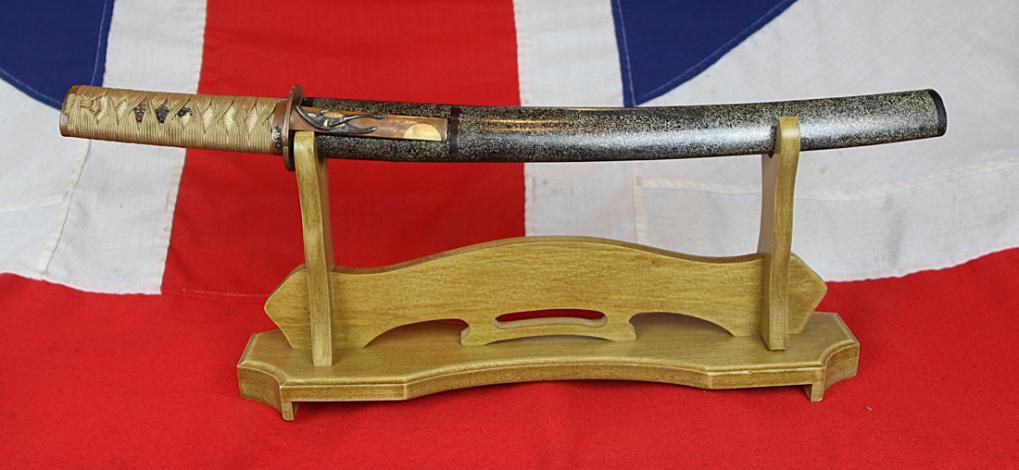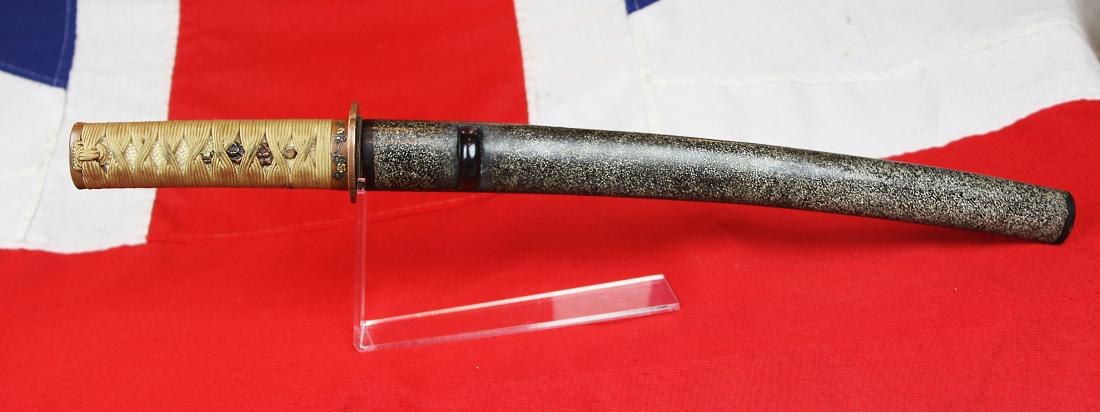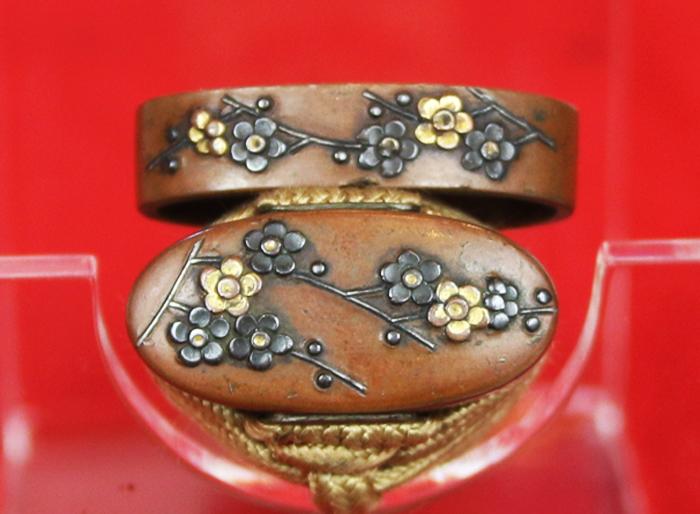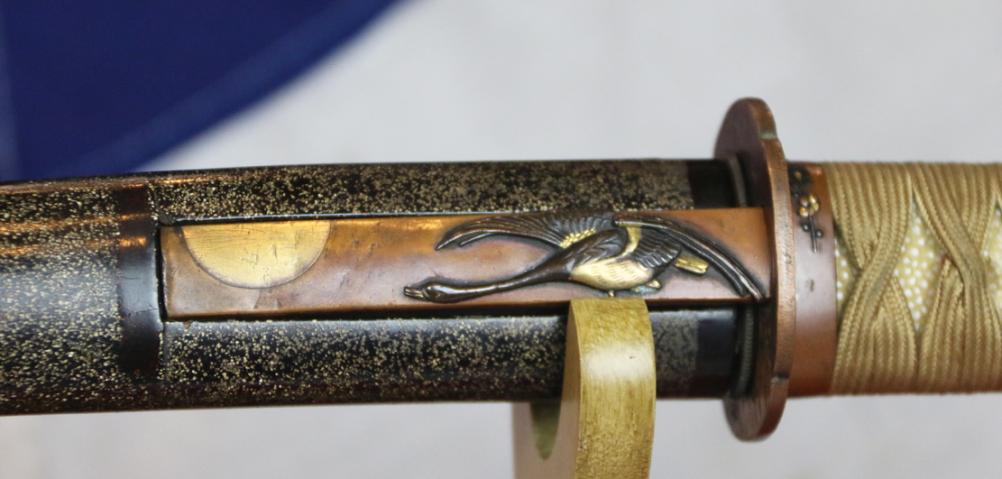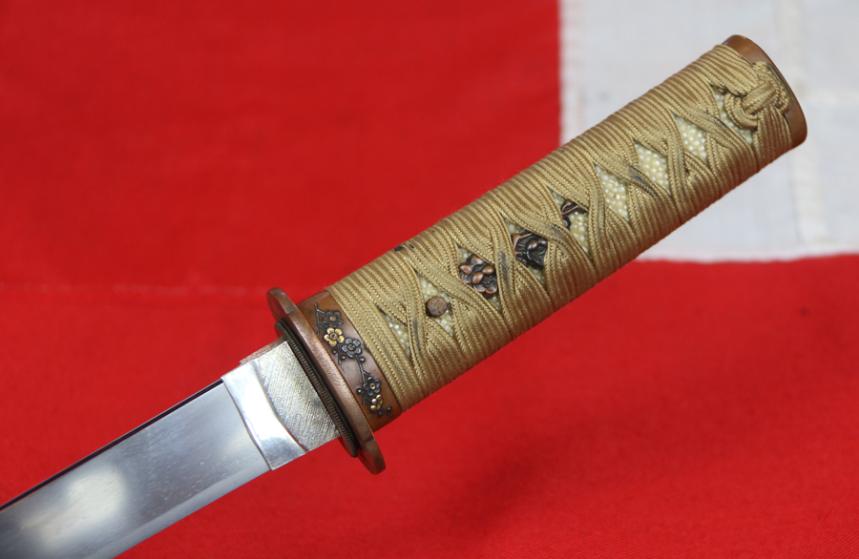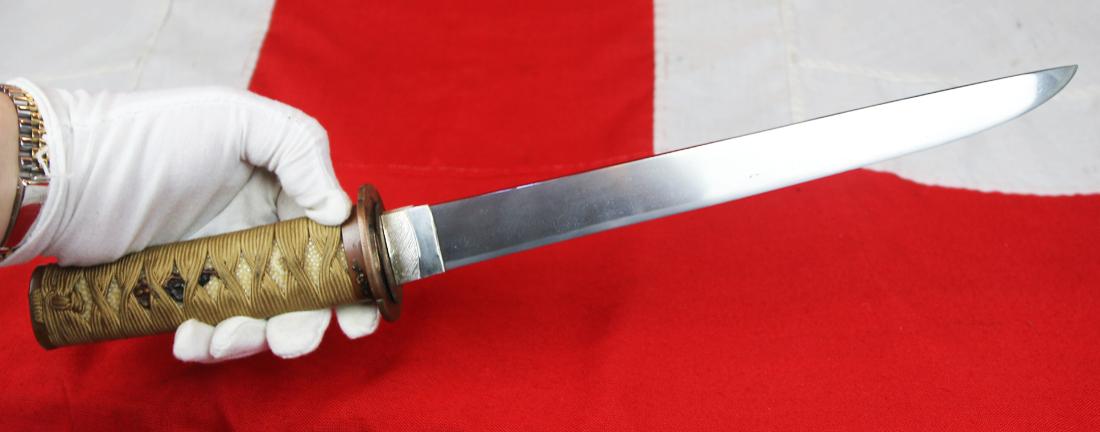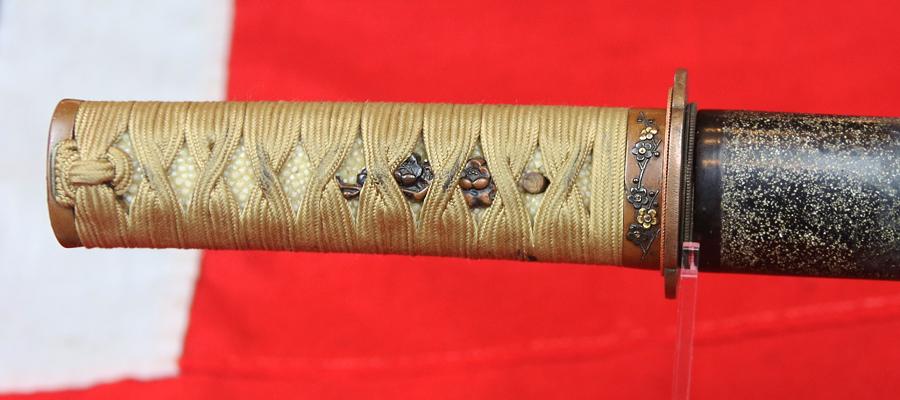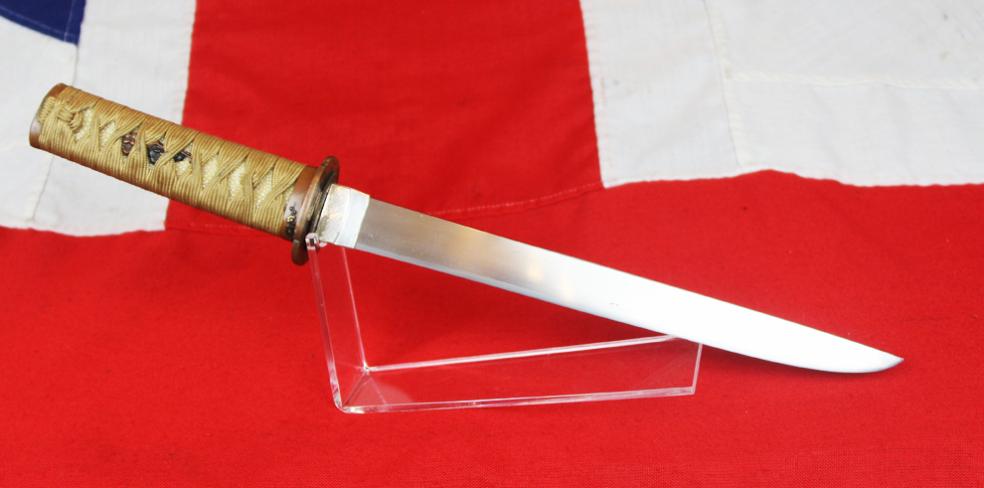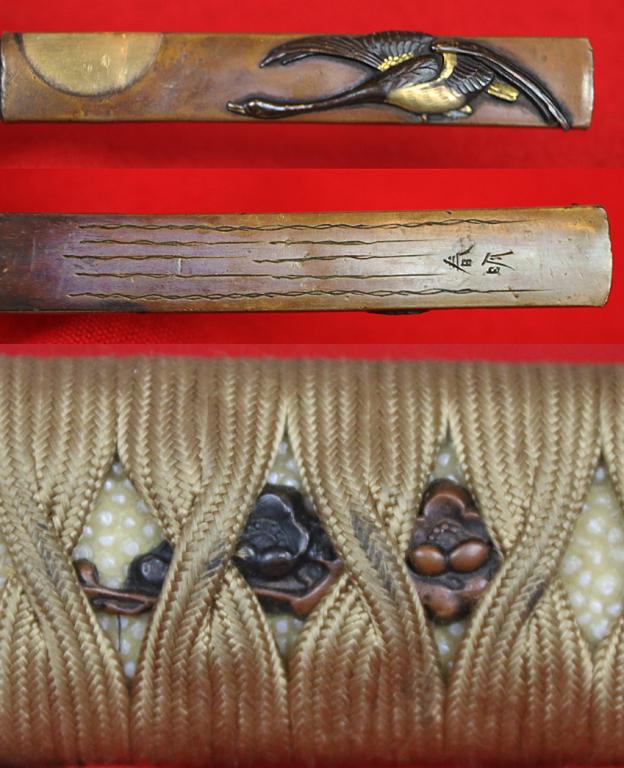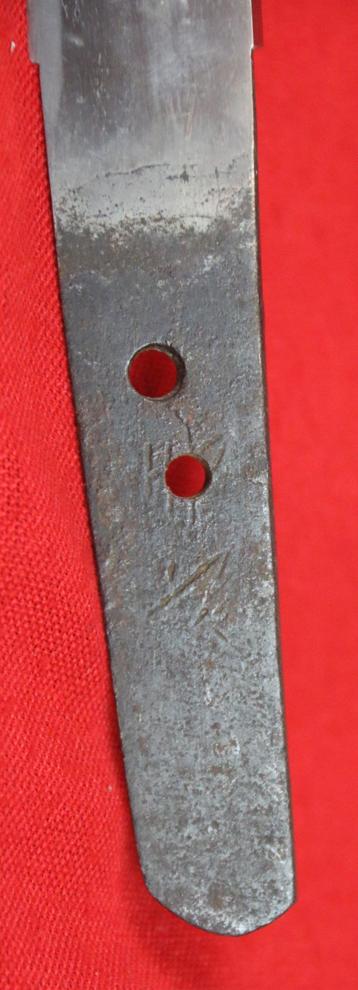A Very Fine Ancient Koto Period Sengoku ‘Plum Blossom’ Tanto Of the 1400's, Signed Blade, Around 600 Plus Years Old. A Museum Piece of Stunning Beauty From The Japanese Samurai's Ancient Warring Period of The Japanese Civil War
Around 600 plus years old. The Japanese "Great Warring Period," more accurately known as the Sengoku period, was an era of intense civil war and social upheaval from the mid-15th to the early 17th century. It was characterized by a power vacuum left by the weakened Ashikaga Shogunate, leading to continuous conflict as regional warlords, or daimyo, fought for control of Japan. This period is famously associated with the samurai, the rise of castle towns, the introduction of firearms, and a social system where lower-ranking individuals could overthrow their superiors (gekokujo).
Likely used by one of the great Japanese clans that used the Ume plum blossom symbol as their kamon crest. With simply fabulous original Edo mounts of a copper ground with silver and gold decor of takebori deep relief plum blossom and berries. A fine copper tsuba stamped with rows of plum blossom kamon. The original edo saya is stunning, and inlaid with almost microscopic inlays of white shell. The saya pocket holds a superb kozuka with a complimenting copper hilt decorated with a takebori gold and shakudo goose in flight, showing with half a pure gold full moon. It is signed on the reverse side.
The blade is very good with typical early, koto narrow straight hamon. The tang is signed but due to its great age is very difficult to translate. There are a super pair of matching takebori plum blossom menuki under the gold silk binding. A tanto would most often be worn by Samurai, and it was very uncommon to come across a non samurai with a tanto. It was not only men who carried these daggers, women would on occasions carry a small tanto called a kaiken in their obi which would be used for self-defence. In feudal Japan a tanto would occasionally be worn by Samurai in place of the wakizashi in a combination called the daisho, which roughly translates as big-little, in reference to the big Samurai Sword (Katana) and the small dagger (tanto). Before the rise of the katana it was more common for a Samurai to carry a tachi and tanto combination as opposed to a katana and wakizashi. Before the 16th century it was common for a Samurai to carry a tachi and a tanto as opposed to a katana and a wakizashi. Plum blossoms, symbolic of the arrival of spring, were a favored subject among scholar-gentleman painters in China, but when Chinese ink paintings of plums arrived in Japan their imagery became widespread within Zen circles. This composition of a gnarled plum tree framed by a circle of ink wash may reflect the use of the circle in Zen painting and calligraphy as a visual representation of words from the text of the Heart Sutra, “form is void and void is form,” and as a symbol of enlightenment.
Motsurin, a Zen artist-monk, might also have chosen plum blossoms because they were beloved of his mentor Ikkyū Sōjun (1394–1481), an abbot of Daitokuji temple in Kyoto known for his poetry, calligraphy, and flagrantly unorthodox behavior. Motsurin’s inscribed text claims that even elegant peonies and sweet jasmine cannot match the plum as a representation of the spring season. Originally brought in from China during the early Heian period (794-1185), plum trees became popular as ornamental garden fixtures because of their delicate beauty. Over the years, many varieties have been cultivated and now you see ume blossoms in a myriad of colours.
Ume blossoms are the first flower of spring and the original inspiration for flower-viewing hanami parties that were so well-loved by the rich aristocrats from the past. 21.5 inches long overall, blade 11 inches long
Code: 23658
4995.00 GBP

